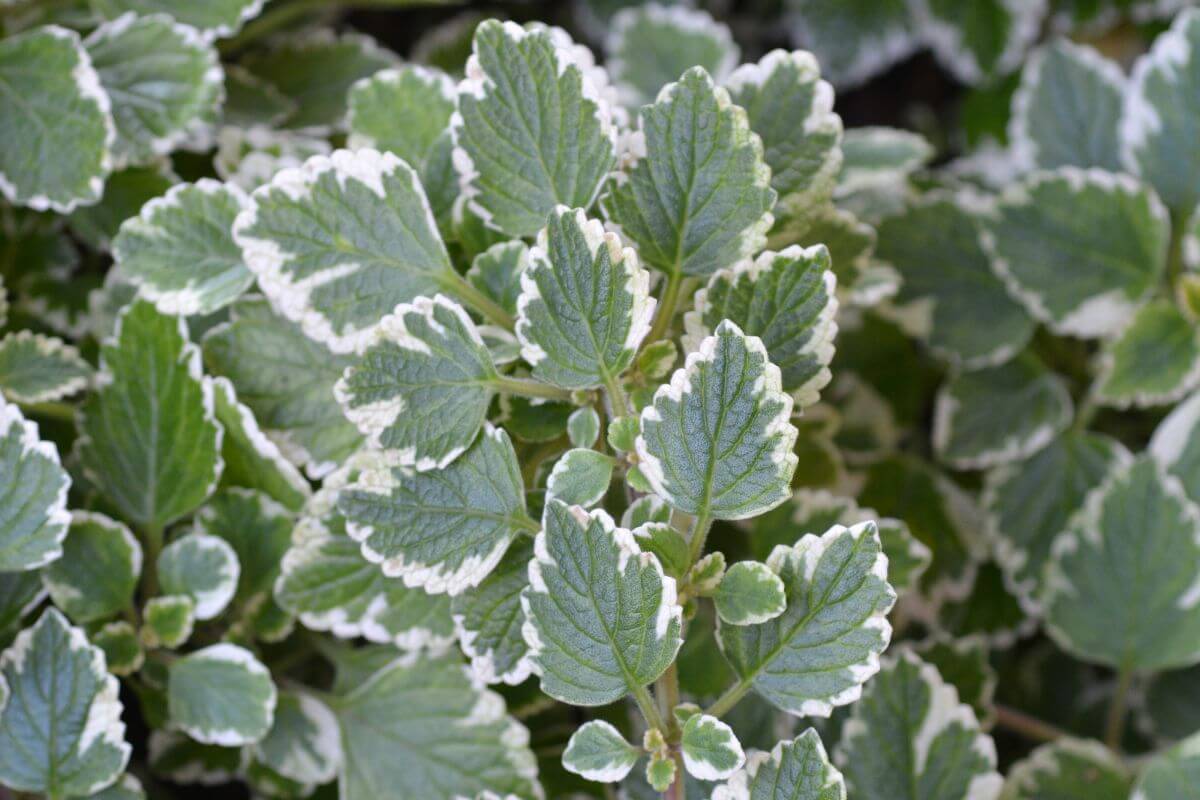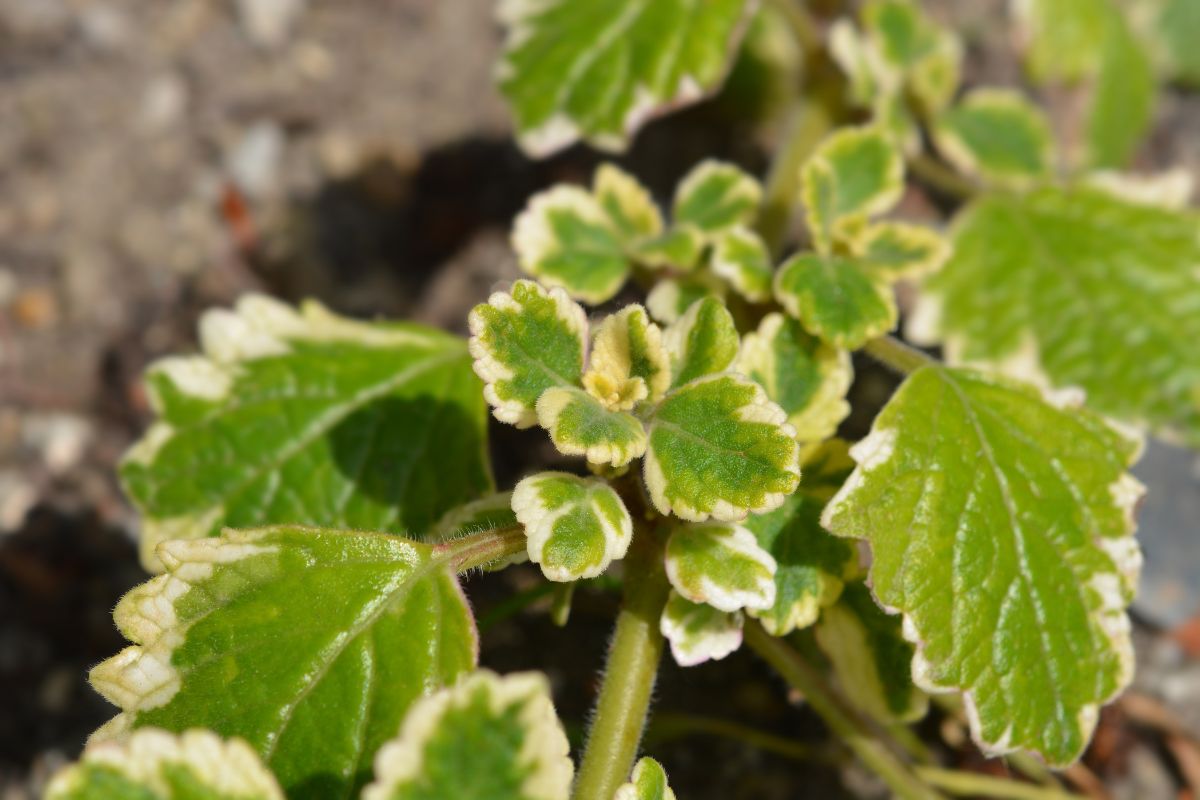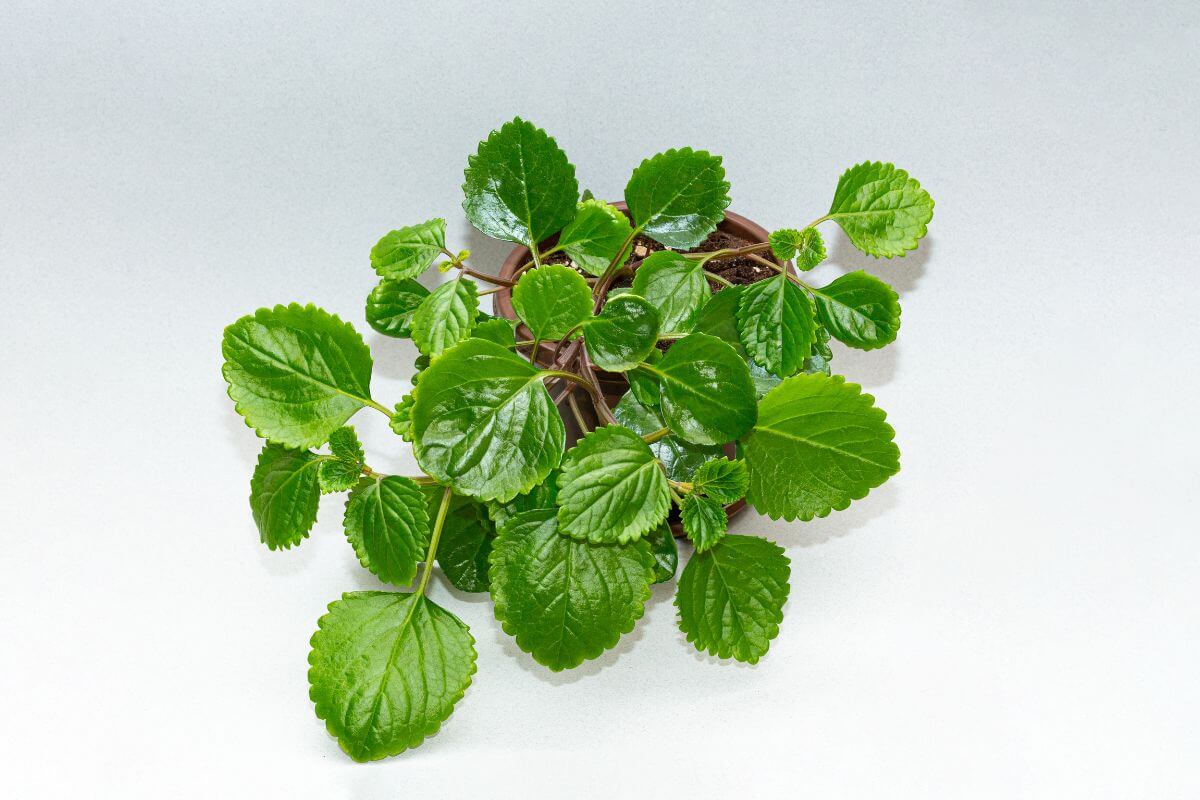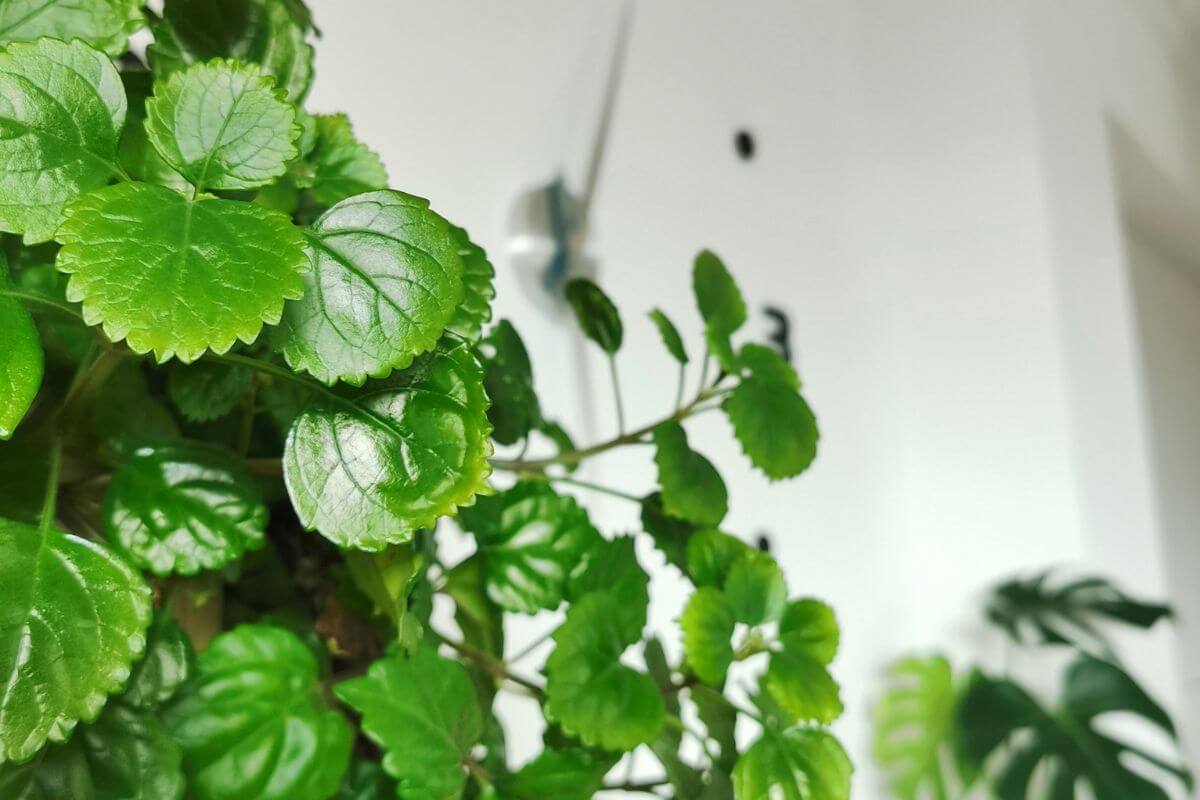As a low-maintenance houseplant, the Swedish Ivy Plant is perfect for brightening any room decor in a hanging basket that allows its vines to trail downward. The shiny green leaves look great cascading down and around furniture and floors.
If you want to grow your own Swedish ivy, here are the care tips to keep in mind.
Swedish Ivy Overview

Swedish Ivy, botanically known as Plectranthus australis, is a delightful cascading plant that grows well when cultivated indoors as a houseplant.
Interesting enough, Sweden is not this plant’s natural habitat, nor is it an ivy plant. Native to Australia and the Pacific Islands, the Swedish ivy has a life span of three to five years, and its vines can grow to several feet in length.
The Swedish ivy is also referred to as “Creeping Charlie” or as “Swedish Begonia.” It should not be confused with Creeping Charlie Weed.
It is characterized by thick stems that initially grow straight up before trailing and cascading down, while the green leaves are glossy with scalloped edges.
White to lavender tinted flower blooms grace this plant in the spring and in the summer. It is a terrific plant to grow in hanging baskets indoors.
When growing outdoors, it is often found as an annual integrated in outdoor landscaping as ground cover.
This plant is usually cultivated for its variegated foliage rather than for its blooms.
Varieties of Swedish ivy include:
- Plectranthus australis is normally a solid green.
- Plectranthus amboinicus smells and tastes like oregano
- Plectranthus argentatus also known as silver spur flower boasts silvery leaves.
- Plectranthus coleoides “Marginatus” is a variegated cultivar featuring white borders on the oval pointed green foliage.
- Plectranthus oertendahlii or “Candle Plant” has round bronze-green hairy leaves with silver veins.
- Plectranthus purpuratus is a purple cultivar.
Swedish Ivy Care Guide
The Swedish ivy is easy to maintain, so they are a good choice for beginner gardeners. It is not at all difficult to learn to cultivate this plant.
Average indoor temperatures and humidity are ideal for a happy plant, meaning that just about any room is perfect. During the summer, it can be moved outside onto a porch, veranda, or balcony.
Environmental Conditions for the Swedish Ivy
Soil for the Swedish Ivy
The ideal soil bed is light with loamy soil. Mix in a bit of perlite for good drainage.
It can also grow in regular potting soil with some peat moss combined.
Lighting for the Swedish Ivy

The Swedish ivy should be positioned to receive bright indirect light all year round. If leaves begin drooping, they are probably receiving too much light.
Tip: If these basic conditions for light and soil are met, your plant will require very little extra care.
Temperature for the Swedish Ivy
Proper care of the Swedish ivy is placing it in average room temperatures set in a range from 60° to 75° Fahrenheit.
Exposure to freezing temperatures will be fatal to the plant, so avoid anything lower than 50° F. Frost is also an enemy of this plant, so bring it indoors during the winter months if you live in a cold climate.
Humidity for the Swedish Ivy
Moderate humidity is adequate for the Swedish ivy. The best way to check whether the humidity levels are right is to place a small dish filled with water near the plants. You want to see how quickly the water evaporates. A healthy plant needs no more than one inch of moisture every week.
Watering and Feeding for the Swedish Ivy
A weekly watering is on the menu for our Swedish ivy plant.From the spring through autumn months, keep the soil moist, but not soggy.
Excellent drainage is a must. You can let the soil bed become a bit dry between your waterings, but never completely dry. Don’t leave it to sit in water.
Feed your Swedish ivy plant bi-weekly, or even every three weeks during the spring and summer.
In the autumn and winter, watering can be limited to once a month. A 20-20-20 balanced fertilizer can be used and follow the manufacturer’s instructions for the dosage.
If the foliage appears a bit lifeless, try increasing feeding somewhat. If your fertilizer is high in nitrogen, you may have fewer blooms. If the plant is not flowering normally, use a fertilizer that is lower in nitrogen content.
Pruning for the Swedish Ivy
Prune the Swedish ivy by pinching off the tips of vines regularly. Pruning will help when it appears leggy or is mostly vine with sparse foliage.
Pinching back will encourage the growth of new vines and can be done any time of year.
Repotting for the Swedish Ivy

Repot the Swedish ivy every other year. With some plants, every third year will do.
If the plant appears to wilt, you can repot sooner, or if it has become rootbound.
Swedish Ivy Common Plant Pests, Diseases, and Problems
Swedish ivy is not particularly susceptible to disease or pest infestations; however, it is susceptible to mealybugs.
You’ll know if these pests have taken up residence in your plant if you see white deposits that resemble cotton on leaves and stems. You can remove the mealybugs manually and then treat the plant with an organic insecticide like neem oil.
Another pest that may visit is the spider mite. If you find webby deposits underneath the leaves, and the leaves become pale, spider mites may be visiting your Swedish ivy. Wipe down the foliage with an organic insecticide or insecticidal soap
Leaf drops indicate underwatering particularly in warmer climates.
In cooler climates, stems may turn soft and rot. This is due to overwatering.
If the foliage turns pale, your plant has been overexposed to direct sunlight.
Swedish Ivy Toxicity and Pets
Swedish Ivy is non-toxic to cats and dogs, so no concerns if you have pets.
Propagating the Swedish Ivy

The best method for propagating Swedish ivy is with stem tip cuttings. Stem cuttings should be made after the plant’s summer blooming. Here’s how to propagate with a stem cutting:
- After the flowers have faded, choose and cut a healthy section of a stem. The cutting should feature a foliage crown on the end.
- Remove any other leaves from the cutting so that the stem is bare.
- Dip the cut end in a little rooting hormone and place them in damp potting soil.
- Now place your cuttings in bright indirect light.
- Mist the cuttings and place a plastic bag over them to help maintain moistness and humidity.
After approximately three weeks, you should notice new growth at the plant’s base. Transplant these new plants. You can dispose of the older original leaf.
For a bushier plant, use three or more rooted cuttings in an eight-inch pot with good drainage.
The Swedish ivy can also be propagated by placing cuttings in water, rather than soil. To propagate stem cuttings in water:
- Cut two to three-inch tips from young fresh branches, below a node.
- Remove the lower leaves, leaving a crown on the end.
- Place the cuttings in a glass of water to develop roots.
- Place the glass with the cuttings in indirect bright light.
Another option to propagate the Swedish Ivy is through division. When it is time to repot, simply, separate a portion of the plant, making sure that a portion of the root ball is connected.
Swedish Ivy Plant Care Final Thoughts
All things considered, the Swedish ivy is an easy-to-care-for, low-maintenance houseplant. If you’re just starting out with gardening, t’s a great plant for learning to garden.
Swedish ivy is ideal for hanging baskets, and pots on a bookshelf or table. Since it tends to spread sideways as it grows, in the right climate, it makes for wonderful ground cover.
For other houseplants, check out these grow and care guides:
- How to Care for English Ivy Plant Guide
- How to Care for the Polka Dot Plant Guide
- How to Care for the Wandering Jew Plant Guide
- How to Care for the Peperomia Plant Guide
Swedish Ivy Plant Care FAQs
Does Swedish Ivy like sun?
The Swedish Ivy likes to get lots of bright indirect sunlight. It will not tolerate full sun exposure, so give it partial shade. You will know it’s received too much sun exposure when the leaves start to droop and you see pale leaves.
What kind of soil does the Swedish Ivy need?
The Swedish Ivy needs well drained soil. A mix of peat moss and perlite works very well. A pH level between 5.5 – 6.5 is perfect for it.
Is Swedish Ivy the same as Creeping Charlie?
Yes, the Swedish Ivy is often referred to as Creeping Charlie as a nickname. It’s not to be confused with the Creeping Charlie Weed that’s invasive and should be removed.
How do you care for a Swedish Ivy?
Proper care for the Swedish Ivy includes regular weekly watering during its growing season, fertilizing once every 2-3 weeks, keeping the soil evenly moist but not soggy, and removing dead leaves regularly.
When growing outdoors, provide adequate moisture but avoid overwatering. Keep the soil slightly wet throughout the summer months. If you live somewhere cold, make sure to bring your plant indoors before temperatures drop below freezing.
Is Swedish Ivy toxic to humans?
No, the Swedish Ivy is not toxic to humands nor pets. Your cats, dogs, and small children are safe around the plant.


